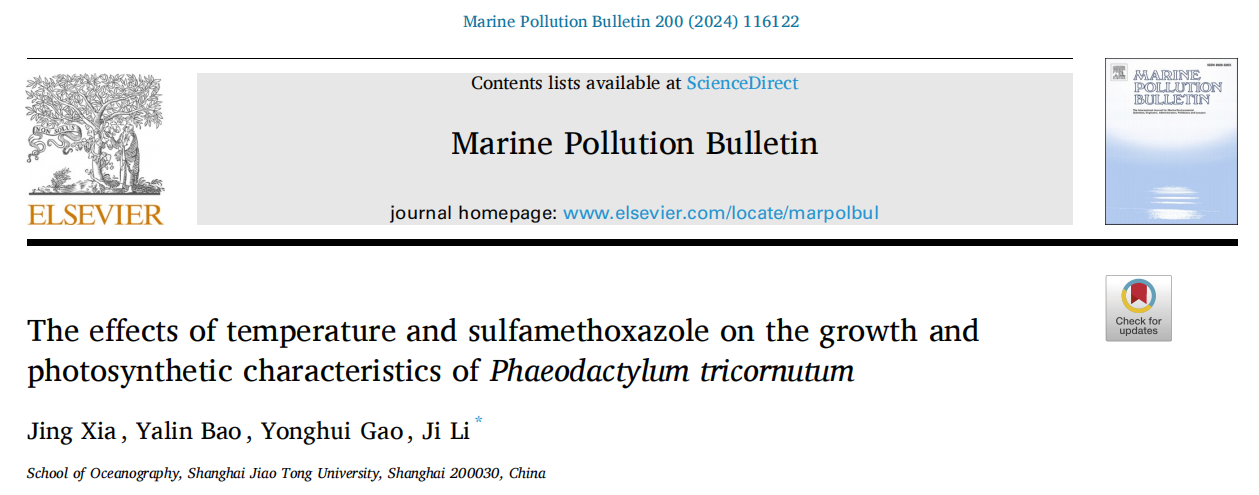


New research has now suggested that the use of antibiotics in marine aquaculture may further harm marine phytoplankton especially in summer. Jing Xia, a 2022 master’s student at the School of Oceanography, Shanghai Jiao Tong University (SJTU-SOO), published a research paper entitled “The effects of temperature and sulfamethoxazole on the growth and photosynthetic characteristics of Phaeodactylum tricornutum” as the first author in Marine Pollution Bulletin. SOO is the independent completion unit. Associate Professor Ji Li is the corresponding author, and co-authors include Associate Professor Yonghui Gao and Yalin Bao M.S..
In recent decades, the marine ecosystem has been under an increasing number and diversity of natural and anthropogenic stressors. Antibiotics are widely used to prevent and treat diseases occurring in mariculture, making mariculture an important source of marine antibiotic pollution while providing high-quality food. The misuse of antibiotics is even more severe in summer as the high incidence season of diseases. Sulfamethoxazole (SMX) is widely used in mariculture as a cost-efficient antibiotic and is prevalent in the world's aquatic environment. Therefore, this study investigated the effects of SMX, a typical antibiotic for local stress, on the growth and photosynthesis of the marine model diatom Phaeodactylum tricornutum, in the broader context of temperature change

Fig. 1. Changes in cell density (cells/mL) of Phaeodactylum tricornutum at different temperatures (18, 21, 24, 27, and 30 °C) for 21 days.
The research confirmed that high temperatures significantly influenced algal cell growth (Fig. 1) and photosynthesis. High concentrations of SMX exhibited rapid and acute toxicity towards the growth and photosynthetic activities of P. tricornutum (Fig. 2), especially at elevated temperatures (Fig. 3). Additionally, long-term exposure to high SMX concentrations resulted in a decline in cell density. Interestingly, it is worth noting that low SMX caused hormesis to P. tricornutum.

Fig. 2. The effects of different concentrations (0, 50, 100, 150, and 200 mg/L) of sulfamethoxazole (SMX) on photosynthesis of Phaeodactylum tricornutum within 100 minutes.

Fig. 3. The effects of temperature and sulfamethoxazole (SMX) concentration on photosynthesis of Phaeodactylum tricornutum at 100 min.
The results emphasize the potential risks of multiple stressors to the primary producers and highlight the importance of assessing the risk of antibiotics on microalgae and their associated ecosystems in environmental monitoring and management efforts to protect marine ecosystem. This information is valuable for setting guidelines and policies to manage antibiotic use and mitigate the environmental risks associated with aquaculture practices, which can contribute to the development of sustainable aquaculture and management strategies for preserving and restoring ecological systems.
This work was supported by the National Key Research and Development Plan (Grant No. 2023YFC3107403), Oceanic Interdisciplinary Program of Shanghai Jiao Tong University (Grant No.WH410260402/035) and Shanghai Frontiers Science Center of Polar Science (SCOPS).
Link to the article: https://doi.org/10.1016/j.marpolbul.2024.116122





